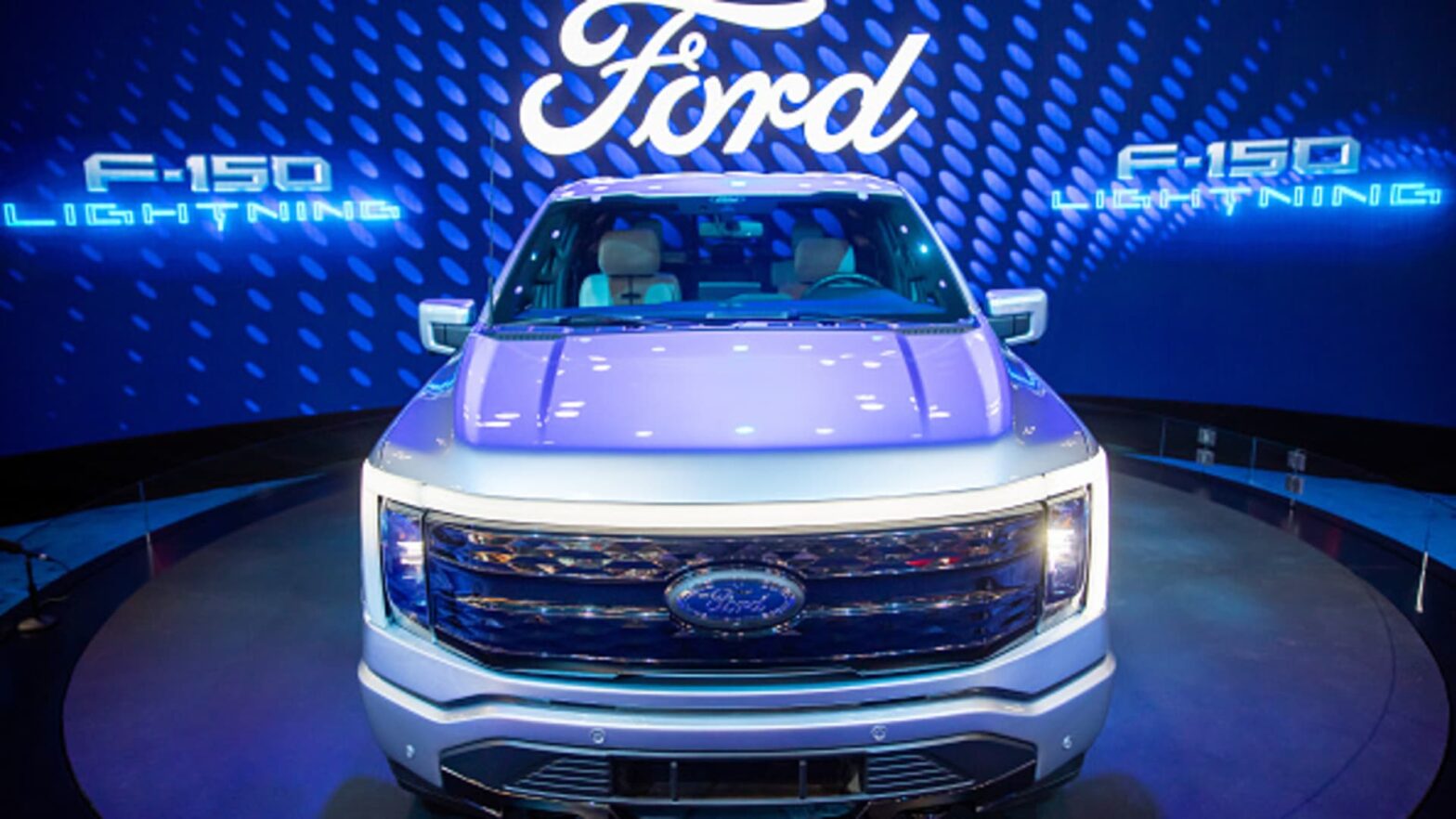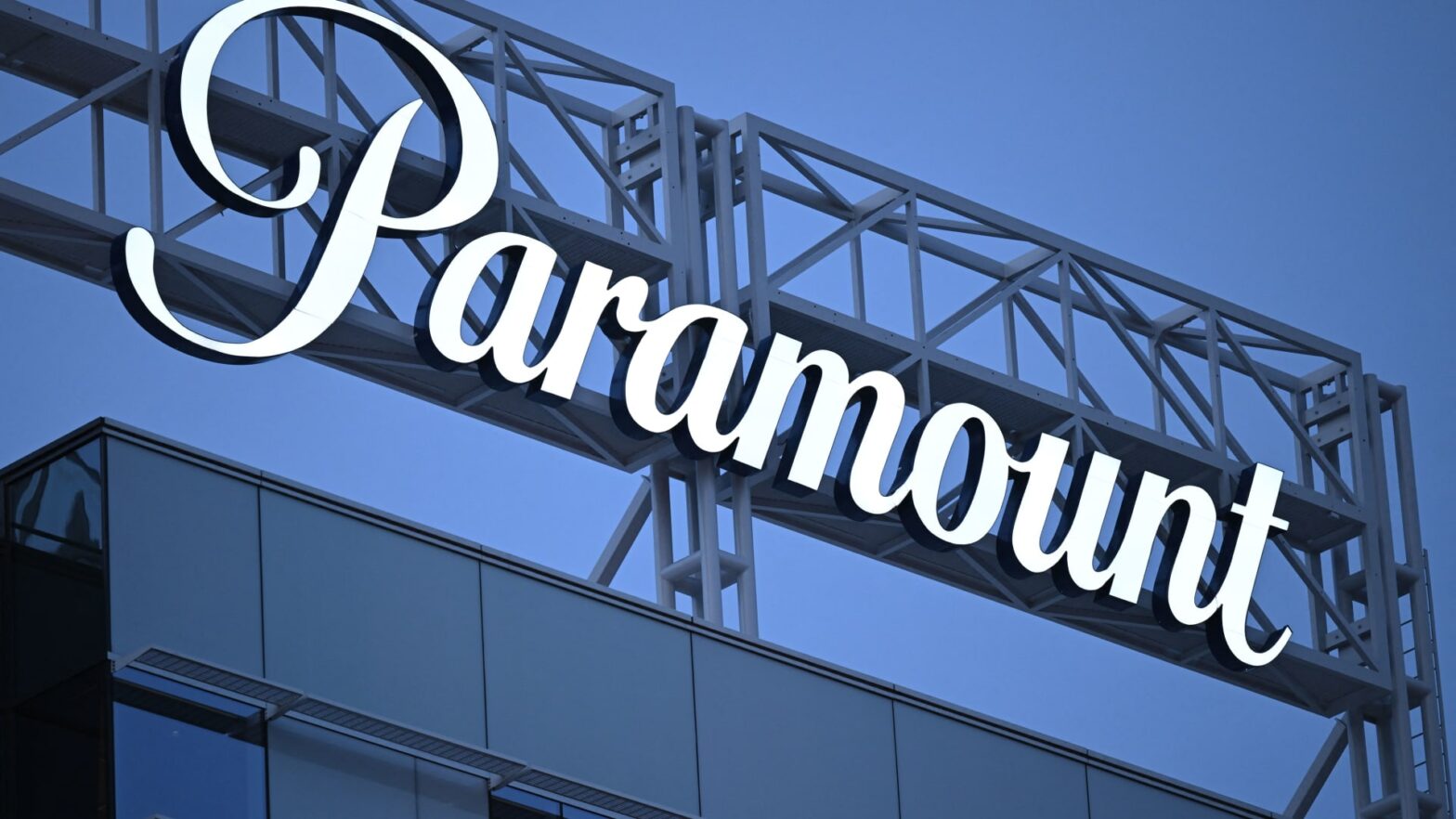U.S. stocks finished higher on Friday, with the Nasdaq Composite capping off a fifth-straight week in the green, and its biggest two-day jump since early February. According to FactSet data, the Nasdaq rose nearly 500 points between Thursday and Friday, the biggest two-day jump since Feb. 2. It’s also the first time since Feb. 3 that the index has risen for five straight weeks. On Friday, the Nasdaq rose 277.59 points, or 2.2%, to finish at 12,975.69, according to preliminary closing data from FactSet. The index rose 2.5% this week, adding to a 3% gain from the week before. The S&P 500 rose 54.19 points, or 1.3%, to 4,205.47 on Friday, up 0.3% for the week. The Dow Jones Industrial Average rose 328.69 points, or 1%, to 33,093.34, but still finished the week down 1%. Stocks rose on Friday due in part to data on consumer spending and orders of so-called durable goods, which suggested the core of the U.S. economy was outperforming at the start of the second quarter. Meanwhile, shares of Nvidia Corp. gained 2.6% on Friday, on top of a gain of nearly 25% on Thursday after the chipmaker reported a blockbuster second-quarter sales forecast. It finished Friday at $389.46, according to FactSet.
Shake Shack’s recent deal with Engaged Capital may have fallen short for shareholders
Sopa Images | Lightrocket | Getty Images
Company: Shake Shack (SHAK)
Business: Shake Shack owns, operates and licenses Shake Shack restaurants, which offer hamburgers, chicken, hot dogs, crinkle-cut fries, shakes, frozen custard, beer, wine and other products. The company was originally founded in 2001 by Danny Meyer’s Union Square Hospitality Group. The company has owned restaurants in every region of the U.S. and licensed locations across the Middle East, Asia and the United Kingdom.
Stock Market Value: $2.76B ($65.40 per share)
Activist: Engaged Capital
Percentage Ownership: 6.6%
Average Cost: n/a
Activist Commentary: Engaged Capital was founded by Glenn W. Welling, a former principal and managing director at Relational Investors. Engaged is an experienced and successful small cap investor and makes investments with a two-to-five-year investment horizon. Its style is holding management and boards accountable behind closed doors.
What’s happening?
Shake Shack entered a cooperation agreement with Engaged. As part of that agreement, the restaurant chain appointed Jeffrey D. Lawrence, former CFO of Domino’s Pizza, to its board and agreed to work with Engaged to identify an additional mutually agreed upon independent director to appoint to the Shake Shack board with restaurant operations experience.
Behind the scenes
Shake Shack is an iconic fast-casual restaurant founded by a culinary visionary, Danny Meyer. Through Union Square Hospitality Group, Meyer founded and operated some of the most critically acclaimed gourmet restaurants in the world for many years. Over the past 20 years, he and his team have developed one of the greatest casual hamburger chain restaurants in the country, Shake Shack. They took Shake Shack public in 2015 with 63 restaurants and have expanded to 436 restaurants in eight years.
Much of the senior management team came from Union Square Hospitality Group and the fine dining industry. Perhaps most notably the CEO, Randy Garutti, has a long history working with Meyer and was the general manager at Union Square Café and Tabla in New York City. The problem is that the same skillset required to create a brand and run upscale, gourmet restaurants is not the same skillset needed to operate and scale a quick-service restaurant. In fact, some might say it is a completely opposite skillset. Accordingly, restaurant margins at Shake Shack have declined by 790 basis points since 2018 and corporate return on capital has gone from greater than 30% to less than zero today. As a public company, Shake Shack has significantly underperformed both the market and its peers.
The good news is that the hard part – creating an iconic brand – has already been done. Not many people can do that. The easy part – scaling an already strong and growing brand – has been done by innumerable people, many of whom are available to do it again. This means getting a board that is focused on putting together a management team with experience operating and expanding quick-service or fast-casual restaurants and holding that team accountable if they do not succeed.
To that end, Engaged announced that it had identified three new director candidates and was pushing for the company to retain an operational consulting firm. One of these candidates, Kevin Reddy, has extensive experience operating and growing restaurant chains like Chipotle. Another candidate is a co-founder of Engaged, and the other is an experienced advisor and consultant. Because the board is staggered, only four of 11 directors are up for election this year. That is only the tip of the iceberg of the challenges Engaged faces in this campaign as this is as bad of a corporate governance structure as we have seen in a public company.
Meyer controls just under 9% of the company’s shares, but he holds special rights over corporate actions that far exceed his economic ownership, including (i) the ability to appoint five directors; (ii) the ability to designate 50% of the members of each committee of the board; (iii) hiring or firing the CEO; and (iv) increasing or decreasing the size of the board. In other words, this is Meyer’s company and only he can make significant changes.
As a result, this is a crusade of persuasion for Engaged. Engaged had an opportunity to go to a proxy fight and have the shareholders replace three incumbent directors, including the CEO, with new directors. While this would not have given Engaged or the new board the power to overrule anything Meyer and his incumbent directors wanted, it would have sent a strong message to them that the shareholders expected change. Instead, Engaged settled for one director who was not even one of the three they proposed and a second to be agreed upon, which also will not likely be one of the three the firm proposed.
This is a definite victory for the company as there is very little one director could do on a board like this. It allows Engaged to claim a win, but the firm is still reliant on Meyer’s decisions, and it lost a valuable opportunity to send a message to management. This effectively changes nothing and gives Engaged no more power to institute the changes it so astutely identified to create shareholder value. Identifying the problems is one thing and having a path to fix them is entirely different. The path here is completely controlled by management.
Ken Squire is the founder and president of 13D Monitor, an institutional research service on shareholder activism, and the founder and portfolio manager of the 13D Activist Fund, a mutual fund that invests in a portfolio of activist 13D investments.
Broadcom stock streaks to record high on hopes for Apple deal
Broadcom Inc. shares surged to new records and led gainers on the S&P 500 index Friday following positive Wall Street commentary, helped along by Apple Inc. earnings, ahead of the chip maker’s earnings on Thursday.
Shares of Broadcom
AVGO,
rallied 12% to a record intraday high of $814.98, and finished up 11.5% at a record high of $812.73, with the previous high being this past Thursday’s $728.80. Broadcom shares also logged their best one-day performance in more than three years, since an 11.8% gain on March 26, 2020. Broadcom shares also led Friday gainers on the S&P 500
SPX,
which closed up 1.3%.
Broadcom announced a deal with Apple Inc.
AAPL,
on Monday to continue supplying certain components for iPhones, and analysts have been raising their hopes for the chip maker in response. Susquehanna Financial analyst Christopher Rolland, who has a positive rating on Broadcom, raised his price target to $785 from $690 on Thursday.
After Apple’s recent earnings showed a surprise jump in iPhone sales, Rolland said reduced iPhone checks “present a modest risk to guidance,” but said the “multiyear, multibillion-dollar extension with Apple for RF/Wi-Fi components should mitigate Apple insourcing risk, solidifying this longer-term relationship.”
On Friday, Oppenheimer analyst Rick Schafer, who has an outperform rating and a $800 price target, said he sees second half sales led by mobile (Apple) and networking, with a boost from artificial intelligence.
“Broadcom’s Tomahawk, Trident and Jericho switches/routers benefit from generative AI adoption as connectivity needs to keep pace w/advances in compute,” Schafer said in a note.
Yellen extends debt-ceiling deadline to June 5 as she urges Congress to act
Treasury Secretary Janet Yellen on Friday said Congress must raise or suspend the U.S. debt ceiling by June 5 or risk a default, extending a previous deadline by a few days.
“We now estimate that Treasury will have insufficient resources to satisfy the government’s obligations if Congress has not raised or suspended the debt limit by June 5,” she wrote in a letter to lawmakers.
Yellen had previously warned that the U.S. could be unable to pay its bills as soon as June 1.
Debt-ceiling talks are continuing between the Biden White House and congressional Republicans.
Debt-ceiling talks are “up and down,” Republican Rep. Patrick McHenry of North Carolina, a key deputy for House Speaker Kevin McCarthy, told reporters on Friday.
Though negotiators are still working on an agreement, it is expected to include energy-permitting reforms, clawbacks of unused COVID-19 aid and potentially tougher work requirements for recipients of some federal assistance.
Another McCarthy deputy, Rep. Garret Graves of Louisiana, told reporters Friday afternoon that Republicans won’t back down on work requirements.
A deal could lift the debt limit through the 2024 elections, reports have said.
“I continue to urge Congress to protect the full faith and credit of the United States by acting as soon as possible,” Yellen wrote to McCarthy and other congressional leaders.
Rubbermaid parent Newell Brands stock falls 3% after company unveils restructuring plan
Shares of Newell Brands Inc.
NWL,
dropped more than 3% in the extended session Friday after the consumer products company behind brands such as Rubbermaid and Elmer glue said it was embarking on a restructuring and savings plan intended to “streamline” its North American distribution network. The goal is to improve the company’s cost structure, Newell Brands said. The plan will be “substantially” completed by the end of fiscal 2024, and includes goals such as reducing the number of distribution centers and automation investments. Newell said it expects to realize annual pre-tax cost savings between $25 million and $35 million by the time the plan is in place. It will incur in about $37 million to $49 million in restructuring and restructuring-related charges, however. That includes charges related to severance payments and to reducing its footprint. Newell also said it expects to incur in $30 million to $40 million in capital expenditures related to the project. Shares of Newell ended the regular trading day up 3.2%.
F, MRVL, PARA, GPS and more
A Ford F-150 Lightning Platinum electric truck during the 2022 New York International Auto Show, New York.
Michael Nagle | Bloomberg | Getty Images
Check out the companies making the biggest moves midday Friday.
Ford — Shares popped 6.24% after Ford and Tesla announced a partnership late Thursday that will give Ford owners access to more than 12,000 Tesla Superchargers in the U.S. and Canada. Tesla‘s stock gained 4.72%.
Marvell Technology — The semiconductor stock soared 32.42% after the company’s earnings beat analyst expectations. Marvell Technology also expects revenue growth to accelerate in the second half of the fiscal year, with CEO Matt Murphy citing artificial intelligence as a “key growth driver.”
Ulta Beauty — Shares of the beauty retailer tumbled 13.37% following the company’s first-quarter earnings announcement. Despite reporting an earnings and revenue beat, shares fell on the company’s reduced operating margin outlook for the full year.
Paramount — Shares of the media company gained 5.89% after National Amusements, Paramount’s majority voting shareholder, announced a $125 million preferred equity investment by BDT Capital Partners. Loop Capital upgraded Paramount to a hold rating from a sell in light of the news. The Wall Street firm said the bull case is the financial pressure will force Paramount to find a buyer and shareholders will achieve private market value.
Gap — Shares of the apparel retailer jumped 12.4% even after the company posted net losses and declining sales Thursday for its most recent quarter. Investors cheered Gap’s big improvement in its margins, which it attributed to reduced promotions and lower air freight expenses.
Workday — The stock rallied 10.01% after its first-quarter earnings and revenue beat analysts’ expectations. Workday also raised the low end of its full-year subscription revenue guidance and named a new chief financial officer, Zane Rowe.
RH — Shares tumbled 3.07% after the retailer’s second-quarter guidance missed analysts’ expectations. The company also warned of increased markdowns. However, RH beat estimates for first-quarter adjusted earnings per share and revenue, per Refinitiv, when it reported results after Thursday’s close.
Deckers Outdoor — Deckers Outdoor popped 3.37% after the footwear company behind Ugg and HOKA shoes reported fiscal fourth-quarter results that exceeded analysts’ expectations. However, it gave full-year earnings and revenue guidance that was lower than expected.
American Express — Shares added 4.08%. On Friday, Morgan Stanley said the recent sell-off was “overdone” and with the stock trading at its cheapest level in years, it’s a good entry point for investors.
Nvidia — The semiconductor stock added 2.54%, a day after surging 24% on the back of the AI darling’s blowout earnings report. The move higher Friday takes Nvidia closer to reaching a $1 trillion market cap.
Monolithic Power Systems, Arista Networks — The stocks were among those getting a boost from Nvidia’s earnings report and the excitement over AI. Monolithic Power Systems rallied 6.68%, while Arista gained 9.06%. Broadcom moved 11.52% higher, NXP Semiconductors added 5.74% and Adobe rose 5.95%.
— CNBC’s Hakyung Kim, Yun Li, Tanaya Macheel and Sarah Min contributed reporting.
3 Tech Stocks With the Best AI Language Models
The stocks on the list are prominent tech stocks with cutting-edge AI language models. The first stock’s advancements include the PaLM API, MakerSuite, and the Generative AI App Builder. It enables developers to generate various media from natural language prompts. In contrast, the second one collaborates with OpenAI and utilizes GPT-3.5 to resolve complex cloud incidents. It is revolutionizing incident management with faster detection and accurate root cause analysis. The third company’s LLaMA model demonstrates exceptional performance and efficiency, signaling a push for accessible and efficient AI systems. These companies are reshaping human-machine interaction and addressing concerns like bias and toxicity. Large language models (LLMs) have become vital assets, with examples like GPT-4, PaLM, and LLaMA driving progress.
The value lies in training LLMs with more parameters and leveraging data and computational power for enhanced performance. As AI language models continue to evolve, these tech stocks stand out as leaders in the field. That is breeding potential for investors through driving innovation in the market.
Alphabet (GOOGL, GOOG)
Alphabet’s (NASDAQ:GOOG, NASDAQ:GOOGL) recent advancements in AI include the introduction of the PaLM API, MakerSuite, Generative AI App Builder, and the expansion of generative AI support within the Vertex AI platform. These developments enable developers to generate text, images, code, videos, and audio from natural language prompts, streamlining the training and fine-tuning process for specific applications. Google’s commitment to empowering businesses with powerful machine learning models is evident by including Google Research and DeepMind models in Vertex AI. Also, its Generative AI App Builder allows for rapid prototyping and innovation.
PaLM-E, a multimodal model, integrates robotics, vision, and language. Its ability to process multimodal inputs improves robotic capabilities, enabling more efficient learning and a wide range of applications, from household assistance to industrial automation. PaLM-E’s proficiency in vision and language tasks opens up opportunities for intelligent systems that understand and generate text in conjunction with visual information. The positive transfer of knowledge from vision-language tasks to robotics also has implications for multimodal learning and machine translation.
In addition, PaLM 2, Google’s next-generation language model, enhances multilingual capabilities, reasoning abilities, and proficiency in coding languages. It can be applied to various tasks, from natural language understanding to translation and programming. Integrating Google DeepMind and Google Brain into a single unit and introducing Gemini, a multimodal model, showcases Google’s commitment to advancing AI capabilities. However, challenges such as the legal implications of training data sources and mitigating issues like “hallucinations” in AI models need to be addressed.
Overall, Google’s advancements in AI language models, multimodal capabilities, and integration across products and services position the conglomerate as a significant player in the AI landscape. Finally, the firm continues innovating while considering responsible deployment and addressing challenges in data sourcing and model outputs.
Microsoft (MSFT)
Microsoft’s (NASDAQ:MSFT) research presented at the ICSE conference highlights the effectiveness of LLMs, specifically GPT-3.5, in analyzing and resolving production incidents in the cloud. GPT-3.5 outperformed previous models, showcasing its potential for root cause analysis and mitigation recommendation tasks. Fine-tuning the models with incident data further improved their performance, emphasizing the importance of domain-specific knowledge.
The research also acknowledges the need to incorporate additional contexts, such as discussion entries and service metrics, to enhance incident diagnosis. In addition, conversational interfaces and retrieval-augmented approaches could further improve incident resolution. The researchers also emphasize the importance of retraining models with the latest incident data to address staleness.
Future versions of LLMs are expected to bring improvements in automatic incident resolution. In addition, as LLM technology advances, the need for fine-tuning may decrease, making the models more adaptable to evolving cloud environments. However, open research questions need further exploration, such as effectively incorporating contextual information and staying up-to-date with the latest incident data.
The successful application of LLMs in cloud incident resolution has broader implications for software engineering. These models can revolutionize incident management by enabling faster detection, accurate root cause analysis, and effective mitigation planning. Finally, Microsoft’s collaboration with OpenAI brings forth different GPT models like Ada, Babbage, Curie, and Davinci. These models cater to various language tasks, from basic to complex, such as sentiment analysis, classification, translation, and image captioning.
Meta Platforms (META)
Meta Platform’s (NASDAQ:META) LLaMA model has significant implications for the future of AI and underscores the challenge of balancing openness and security in AI research. Furthermore, it highlights the need for responsible handling of cutting-edge technology and the risks associated with unrestricted access.
The competitive performance of LLaMA compared to existing models like GPT-3 and PaLM showcases rapid advancements in AI language technology. Furthermore, the smaller parameter size of LLaMA achieving similar performance suggests future models may continue improving efficiency and effectiveness. This trend could lead to more accessible AI systems that require less computational power and enable a broader range of users to leverage advanced language capabilities.
Addressing bias and toxicity in language models remains a concern. While LLaMA shows some improvement in mitigating bias compared to GPT-3, it is crucial to continue addressing these challenges. Prioritizing research and development efforts on reducing biases, enhancing model fairness, and ensuring responsible and ethical content generation is essential.
The leak of LLaMA and its availability to independent researchers can foster innovation and diverse applications. Researchers can fine-tune the model for specific tasks and explore new use cases, leading to novel advancements in natural language processing and human-computer interaction.
LLaMA’s range of models, from 7 billion to 65 billion parameters, can potentially revolutionize LLMs. LLaMA achieves state-of-the-art performance with fewer computing resources by training on vast amounts of unlabeled data. This enables researchers to experiment, validate existing work, and explore diverse use cases. In addition, the model’s training on various datasets enhances its performance and versatility.
Finally, benchmark evaluations demonstrate LLaMA’s capabilities across multiple tasks. It outperforms other models in common-sense reasoning, closed-book question answering, and trivia benchmarks while performing comparably in reading comprehension. Although it struggles with mathematical reasoning, LLaMA excels in code generation.
As of this writing, Yiannis Zourmpanos was long META, GOOG. The opinions expressed in this article are those of the writer, subject to the InvestorPlace.com Publishing Guidelines.
MULN Stock is in the Fast Lane to Zero
The phrase “from bad to worse,” may sound cliché, but it is perhaps the best way to describe the current situation with Mullen Automotive (NASDAQ:MULN). Over the past few weeks, MULN stock has kept rapidly depreciating in value.
A grab bag of longstanding risks continues to persist. If that is not bad enough, there’s one key risk, previously thought to be mitigated, that has potentially re-emerged.
Some investors still bullish on the stock may believe there’s a way out for MULN. However, taking a look at the company’s latest quarterly results, it’s hard to see how such a comeback scenario could possibly play out.
Instead, a move towards zero appears very likely, if not inevitable. Here’s why.
| MULN | Mullen Automotive | $0.82 |
Two Reasons MULN Stock Moved Lower
Mullen shares have been on a sharp downward trajectory for quite some time. However. in May, several developments have meant the stock has gone from merely sliding down to lower prices, to barreling down to lower prices.
First, the 1-for-25 reverse-split of MULN stock on May 4. On the surface this corporate action may seem like a positive development. A reverse-split enabled the stock to get back above the $1 per share mark.
This let the company to get back into compliance with Nasdaq, and therefore maintain MULN’s listing on the exchange. However, the reverse-split also opens the door for something else.
As InvestorPlace’s Thomas Niel argued on May 12, the reverse-split resulted in the company’s share count going back to significantly below its authorized share count.
This opens the door for further rounds of heavy dilution, both from the sale of new shares, as well as from the conversion of previously-issued convertible securities. The prospect of additional dilution may have driven MULN’s slide right after the completion of the reverse-split.
Second, the release of Mullen’s latest quarterly financials on May 15. Investors reacted negatively to the facts and figures from this release, and for very substantive reasons.
Latest Earnings Hurt in More Ways Than One
This EV maker’s latest quarterly financial filing has been damaging to MULN stock in more ways than one. Once again, the company reported zero revenue, high operating losses, and an extremely high net loss per share ($1.30).
As these numbers underscore many of the risks that I have long argued are part-and-parcel to the Mullen story (such as bankruptcy and dilution risk) the market has de-rated shares accordingly.
In turn, this de-rating, which resulted in pushing MULN back below $1 per share, has caused the aforementioned “mitigated key risk” to possibly re-emerge.
That would be the stock’s delisting risk. As InvestorPlace’s Eddie Pan pointed out on May 24, although MULN has, since the split, closed above $1 per share for ten consecutive trading days, that does not necessarily mean the stock is back in compliance with Nasdaq.
While not for certain, there’s a chance that Mullen has failed to meet all of the requirements to regain compliance from just 10 consecutive days of trading above $1 per share.
Delisting per se will not make the underlying situation with Mullen Automotive any worse. However, a move from the Nasdaq to the over-the-counter market would undoubtedly put pressure on the stock.
The Verdict
Admittedly, it is not a given that a “game over moment” (i.e. bankruptcy) is just around the corner for this struggling EV upstart. Remember, this company’s management has no qualms about using dilutive fundraising methods that are destructive to shareholder value.
Mullen may keep the lights on for a few more quarters. However, not only does this mean that shares will continue to rapidly depreciate in value.
Expect it to become even more difficult over time for Mullen to tap into this funding source. Convertible securities buyers will only buy if there’s a liquid enough market to sell into post-conversion.
The verdict here is pretty cut-and-dry. Now more than ever, MULN stock is a clear-cut “avoid” situation.
MULN stock earns a D rating in Portfolio Grader.
On the date of publication, neither Louis Navellier nor the InvestorPlace Research Staff member primarily responsible for this article held (either directly or indirectly) any positions in the securities mentioned in this article.
How to Use the Descending Trendline to Enter into Bullish Positions
Paramount shares pop after BDT Capital bets on the media giant’s key shareholder
The Paramount logo is displayed at Columbia Square along Sunset Blvd in Hollywood, California on March 9, 2023.
Patrick T. Fallon | AFP | Getty Images
Paramount Global shares jumped nearly 6% on Friday after an investor known as Warren Buffett’s favorite banker piled into the media company’s controlling shareholder.
National Amusements, Paramount’s majority voting shareholder, announced Thursday afternoon that it has entered into an agreement for a $125 million preferred equity investment from BDT Capital Partners, an affiliate of BDT & MSD Partners.

Paramount
Some Buffett watchers noticed a curious connection with the news. BDT & MSD Partners’ chairman and co-CEO is Byron Trott, who has long been known as Buffett’s preferred and trusted banker. It was Trott who suggested that Buffett throw a $5 billion lifeline to Goldman Sachs during the 2008 financial crisis.
The connection didn’t end there. Buffett’s Berkshire Hathaway is actually Paramount’s biggest institutional investor with a stake of 15.4%, according to FactSet. Berkshire initially took the stake in the first quarter of 2022, and the bet is worth about $1.32 billion after Paramount’s recent sell-off.
Paramount has slid more than 30% since the start of the second quarter after its quarterly earnings and revenue missed analyst estimates, and the CBS parent slashed its quarterly dividend.
“So what we now have here is Trott having a say on what happens at NAI. And NAI having a say in what happens to Buffett’s 15% stake in PARA,” Don Bilson, head of event-driven research at Gordon Haskett, said in a note. “Where this goes is TBD but with Buffett and his banker in the mix, this situation is more interesting today than it was when the week began.”
‘Not good news’
Asked about Paramount at Berkshire’s annual shareholders meeting early May, Buffett, 92, struck a negative tone about the big dividend cut, while signaling his pessimistic outlook for the streaming business.
“It’s not good news when any company passes its dividend, or cuts its dividend dramatically,” Buffett said. “The streaming business is extremely interesting to watch … there’s a lot of companies doing it. And you need fewer companies or you need higher prices. And, well, you need higher prices or it doesn’t work.”
It was unclear if it was Buffett who bought the Paramount position or his investing lieutenants, Ted Weschler and Todd Combs, each of whom oversees $15 billion at Berkshire.
Upgrade from Loop
Loop Capital on Friday upgraded Paramount to a hold rating from a sell in light of the BDT investment. The Wall Street firm said the bull case is that the financial pressure will force Paramount to find a buyer and shareholders will achieve private market value.
“While we still believe a turnaround of PARA will be a challenge, investors’ perception of the company could change with a motivated seller, clever bankers, and Berkshire’s purse strings,” Loop Capital said in a note.











